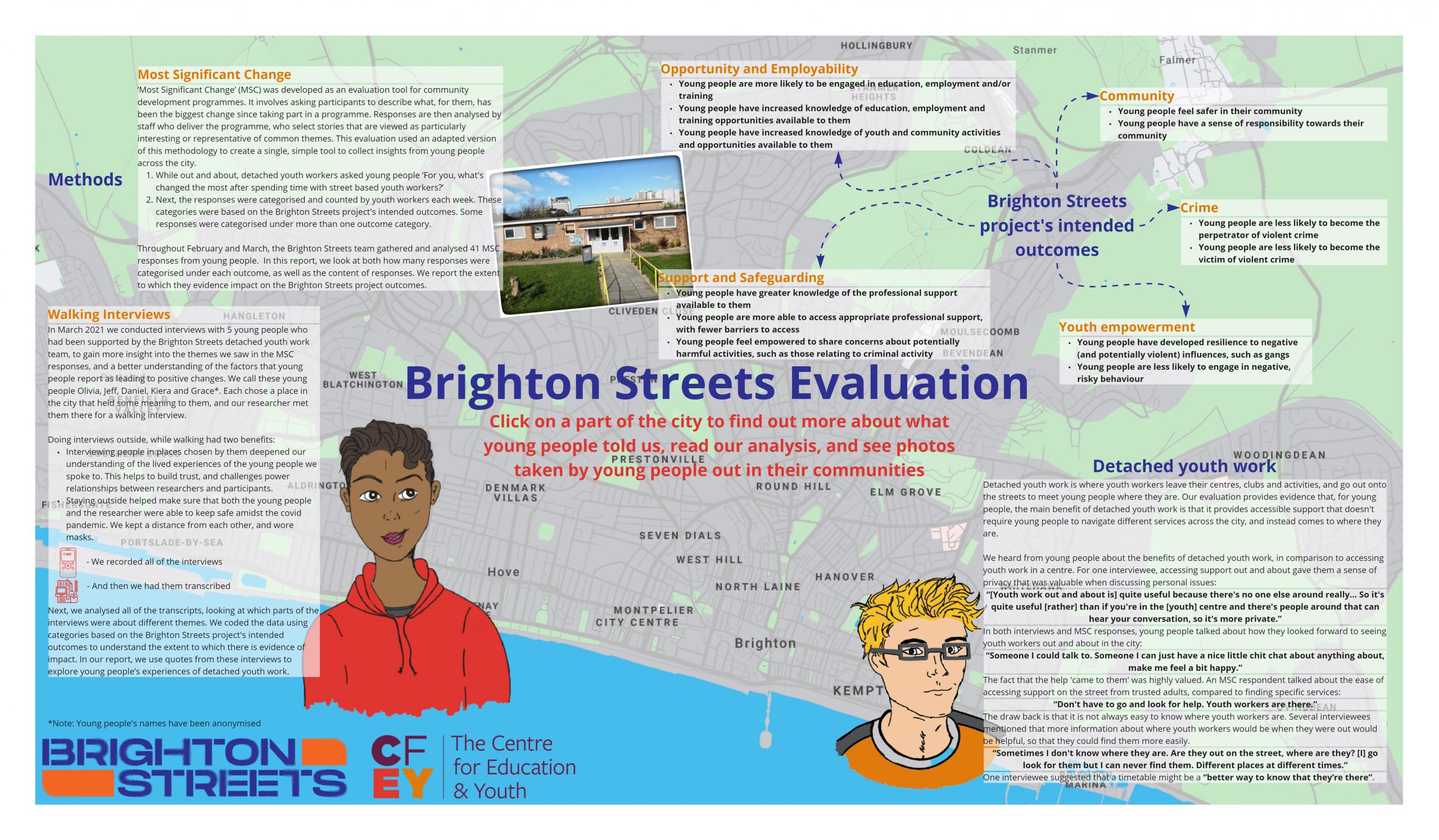Intended Outcomes
Opportunity and employability
- Young people are more likely to be engaged in education, employment and/or training
- Young people have increased knowledge of education, employment and training opportunities available to them
- Young people have increased knowledge of youth and community activities and opportunities available to them
Support and safeguarding
- Young people have greater knowledge of the professional support available to them
- Young people are more able to access appropriate professional support, with fewer barriers to access
- Young people feel empowered to share concerns about potentially harmful activities, such as those relating to criminal activity
Youth empowerment
- Young people have developed resilience to negative (and potentially violent) influences, such as gangs
- Young people are less likely to engage in negative, risky behaviour
Crime
- Young people are less likely to become the perpetrator of violent crime
- Young people are less likely to become the victim of violent crime
Community
- Young people feel safer in their community
- Young people have a sense of responsibility towards their community
Methods
Most Significant Change
‘Most Significant Change’ (MSC) was developed as an evaluation tool for community development programmes. It involves asking participants to describe what, for them, has been the biggest change since taking part in a programme. Responses are then analysed by staff who deliver the programme, who select stories that are viewed as particularly interesting or representative of common themes. This evaluation used an adapted version of this methodology to create a single, simple tool to collect insights from young people across the city.
- While out and about, detached youth workers asked young people ‘For you, what’s changed the most after spending time with street based youth workers?’
- Next, the responses were categorised and counted by youth workers each week. These categories were based on the Brighton Streets project’s intended outcomes. Some responses were categorised under more than one outcome category.
Throughout February and March, the Brighton Streets team gathered and analysed 41 MSC responses from young people. In this report, we look at both how many responses were categorised under each outcome, as well as the content of responses. We report the extent to which they evidence impact on the Brighton Streets project outcomes.
Walking Interviews
In March 2021 we conducted interviews with 5 young people who had been supported by the Brighton Streets detached youth work team, to gain more insight into the themes we saw in the MSC responses, and a better understanding of the factors that young people report as leading to positive changes. We call these young people Olivia, Jeff, Daniel, Kiera and Grace*. Each chose a place in the city that held some meaning to them, and our researcher met them there for a walking interview.
Doing interviews outside, while walking had two benefits:
- Interviewing people in places chosen by them deepened our understanding of the lived experiences of the young people we spoke to. This helps to build trust, and challenges power relationships between researchers and participants.
- Staying outside helped make sure that both the young people and the researcher were able to keep safe amidst the covid pandemic. We kept a distance from each other, and wore masks.
We recorded all of the interviews and then we had them transcribed
Next, we analysed all of the transcripts, looking at which parts of the interviews were about different themes. We coded the data using categories based on the Brighton Streets project’s intended outcomes to understand the extent to which there is evidence of impact. In our report, we use quotes from these interviews to explore young people’s experiences of detached youth work.
*Note: Young people’s names have been anonymised
Detached youth work
Detached youth work is where youth workers leave their centres, clubs and activities, and go out onto the streets to meet young people where they are. Our evaluation provides evidence that, for young people, the main benefit of detached youth work is that it provides accessible support that doesn’t require young people to navigate different services across the city, and instead comes to where they are.
We heard from young people about the benefits of detached youth work, in comparison to accessing youth work in a centre. For one interviewee, accessing support out and about gave them a sense of privacy that was valuable when discussing personal issues:
“[Youth work out and about is] quite useful because there’s no one else around really… So it’s quite useful [rather] than if you’re in the [youth] centre and there’s people around that can hear your conversation, so it’s more private.”
In both interviews and MSC responses, young people talked about how they looked forward to seeing youth workers out and about in the city:
Someone I could talk to. Someone I can just have a nice little chit chat about anything about, make me feel a bit happy.
The fact that help ‘came to them’ was highly valued. An MSC respondent talked about the ease of accessing support on the street from trusted adults, compared to finding specific services:
Don’t have to go and look for help. Youth workers are there.
The drawback is that it is not always easy to know where youth workers are. Several interviewees mentioned that more information about where youth workers would be when they were out would be helpful, so that they could find them more easily.
Sometimes I don’t know where they are. Are they out on the street, where are they? [I] go look for them but I can never find them. Different places at different times.
One interviewee suggested that a timetable might be a “better way to know that they’re there”.

